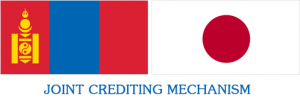Low Carbon Development Partnership between the Japanese side and the Mongolian side
- The Japanese side and the Mongolian side (hereinafter referred to as “both sides”), in pursuit of the ultimate objective of the United Nations Framework Convention on Climate Change (hereinafter referred to as the “Convention”) as stated in its Article 2 and of achieving sustainable development, and in order to continue to address climate change in cooperation beyond 2012, promote the Low Carbon Development Partnership as follows.
- Both sides hold close policy consultations at various levels for cooperation toward low carbon development under the UN, at the regional and bilateral frameworks.
- Both sides, in order to promote investment and deployment of low carbon technologies, products, systems, services and infrastructure to achieve low carbon development in Mongolia, establish a Joint Crediting Mechanism (hereinafter referred to as the “JCM”) and implement it in accordance with the relevant domestic laws and regulations in force in respective countries.
- Both sides establish the Joint Committee to operate the JCM.
(1) The Joint Committee consists of representatives from both sides.
(2) Rules of procedures of the Joint Committee, including its membership, are formulated through consultations between both sides
(3) The Joint Committee develops rules and guidelines regarding of the JCM, methodologies to quantify the amount of greenhouse gases emission reductions or removals, requirements for accreditation of third-party entities, and other matters relating to the implementation and administration of the JCM as necessary
(4) The Joint Committee convenes meetings on regular basis to evaluate the implementation of the JCM.
- Both sides mutually recognize that verified reductions or removals from the mitigation projects under the JCM can be used as a part of their own internationally pledged greenhouse gases mitigation efforts.
- Both sides ensure the robust methodologies, transparency and the environmental integrity of the JCM and maintain the JCM simple and practical, to promote concrete actions for global greenhouse gases emissions reductions or removals.
- Neither side uses any mitigation projects registered under the JCM for the purpose of any other international climate mitigation mechanisms to avoid double counting on greenhouse gases emission reductions or removals.
- Both sides work in close cooperation to facilitate financial, technological and capacity building support necessary for the implementation of the JCM.
- The JCM starts its operation as the non-tradable credit type mechanism. Both sides continue consultation for the transition to the tradable credit type mechanism and reach a conclusion of such consultation at the earliest possible timing, taking account of implementation of the JCM.
- Both sides aim for concrete contributions to assisting adaptation efforts of developing countries through the JCM after the JCM is converted to the tradable credit type mechanism.
- This partnership covers the period until a possible coming into effect of a new international framework under the Convention. Both sides consider possible extension of this partnership and reach a conclusion before its termination, taking into account, inter alia, and the progress made in the United Nations negotiations on climate change.
- Any content of this partnership is modified only by mutual consent in writing between both sides.
Signed in Ulaanbaatar on January 2013, in two originals in the English language.
Takenori Shimizu Sanjaasuren Oyun
Ambassador Extraordinary and Minister for Environment and
Plenipotentiary of Japan to Mongolia Green Development of Mongolia

